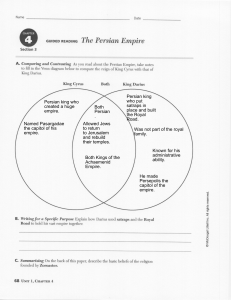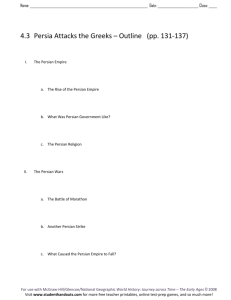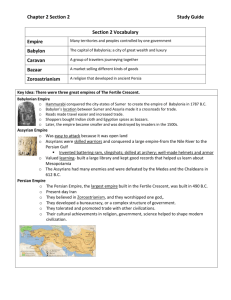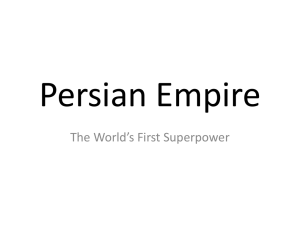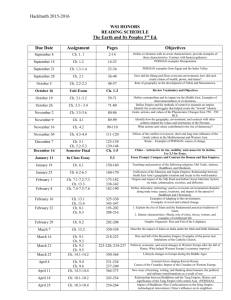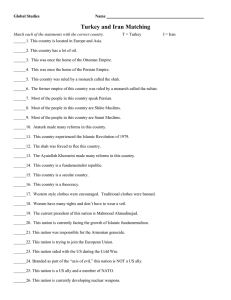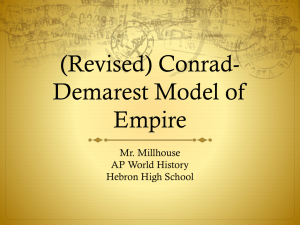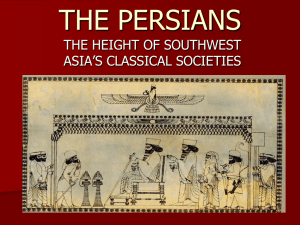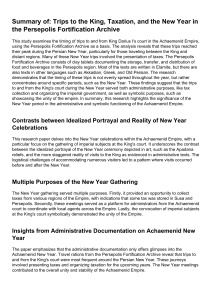AP World History
advertisement
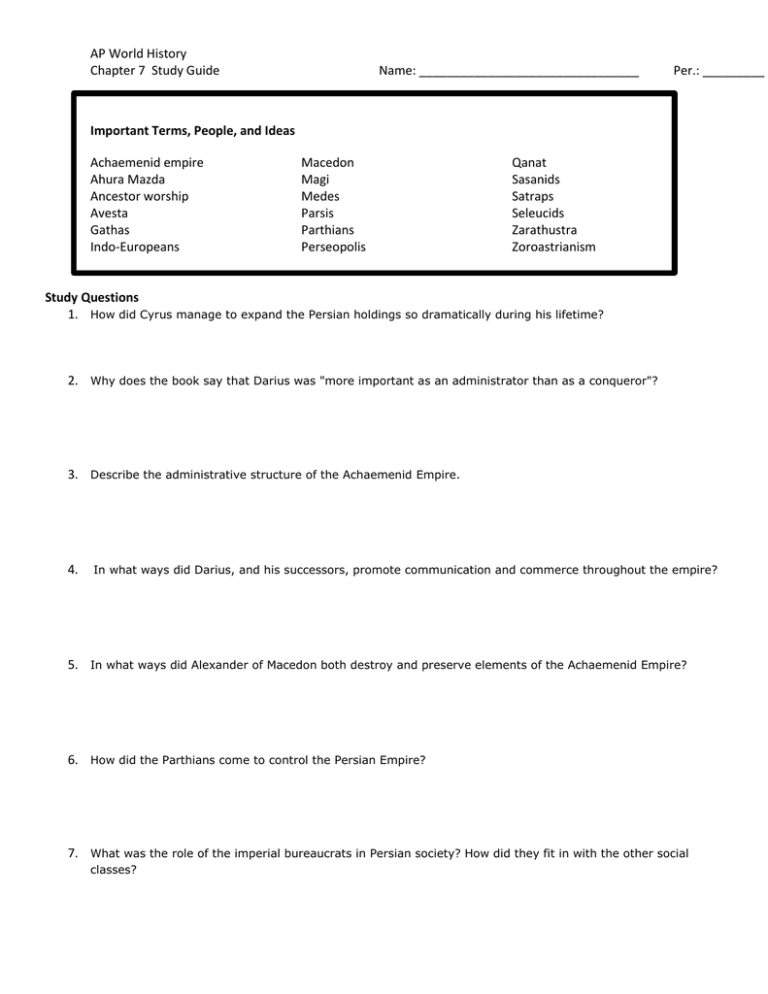
AP World History Chapter 7 Study Guide Name: ________________________________ Per.: _________ Important Terms, People, and Ideas Achaemenid empire Ahura Mazda Ancestor worship Avesta Gathas Indo-Europeans Macedon Magi Medes Parsis Parthians Perseopolis Qanat Sasanids Satraps Seleucids Zarathustra Zoroastrianism Study Questions 1. How did Cyrus manage to expand the Persian holdings so dramatically during his lifetime? 2. Why does the book say that Darius was "more important as an administrator than as a conqueror"? 3. Describe the administrative structure of the Achaemenid Empire. 4. In what ways did Darius, and his successors, promote communication and commerce throughout the empire? 5. In what ways did Alexander of Macedon both destroy and preserve elements of the Achaemenid Empire? 6. How did the Parthians come to control the Persian Empire? 7. What was the role of the imperial bureaucrats in Persian society? How did they fit in with the other social classes? AP World History Chapter 7 Study Guide Name: ________________________________ Per.: _________ 8. What agricultural technologies and techniques did the Persians use to produce the large surpluses they needed to feed their huge population of nonfood producers? 9. The Persian Empires were noted for being part of a trade route critical to the economy of the classical world. What did the rulers do to facilitate trade? Why was Persia geographically so important? 10. What were the basic teachings of Zoroastrianism? Why is it considered a highly moralistic religion? How did Zoroastrianism influence other religions? Inquiry Questions 11. What aspects of Zoroastrianism seem like modern religions? How do you think the teachings of Zarathustra would influence the believers’ behavior and attitudes at the time? 12. The authors refer to the Persian Empires as "cosmopolitan." What does this mean? In what ways did the rulers promote this cosmopolitanism? 13. The authors suggest that classical societies were more complex and more sophisticated than the early societies discussed in part 1. What evidence do you see of this in the development of the Persian Empires?
